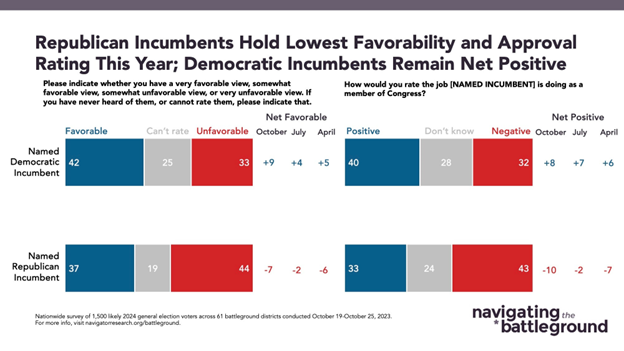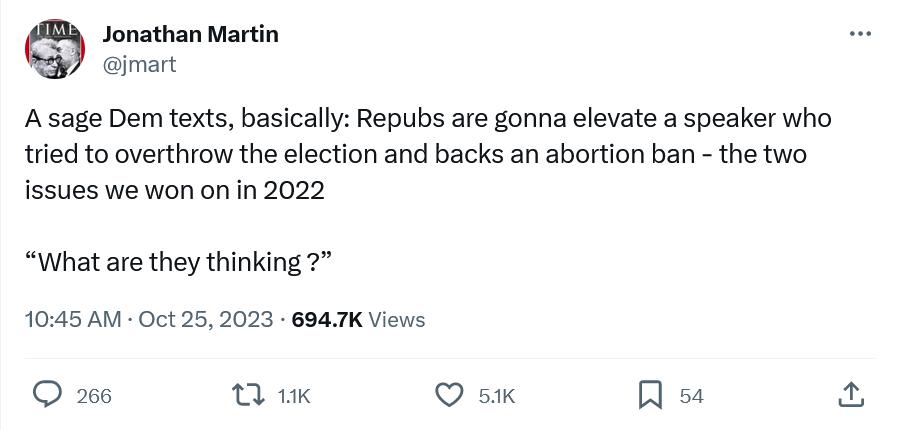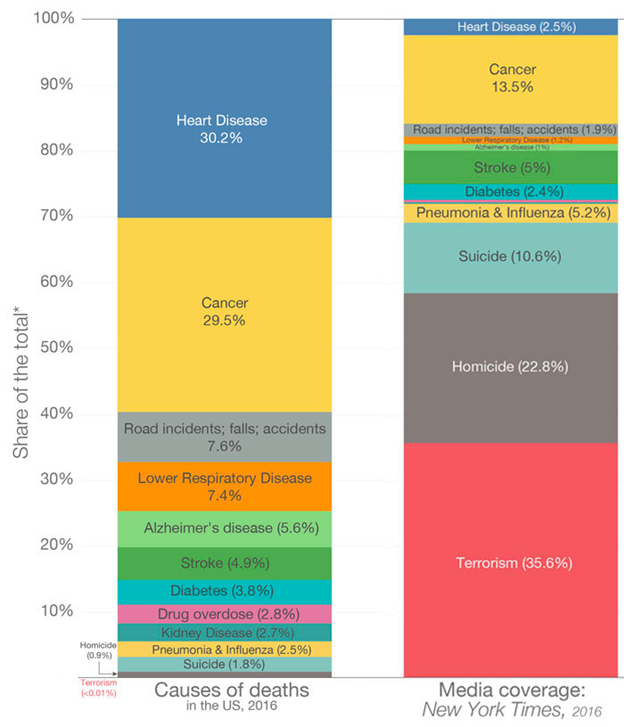The Daily Escape:

Pemaquid Point Lighthouse, ME – December 2023 drone photo by Rick Berk Photography
There are plenty of newsworthy items as we end another week. You can read about them all over the internet. Wrongo wants to highlight just one: The Dow Jones index is up 29% since bottoming on Sept. 30, 2022, climbing to a new all-time high.
This is mostly due to the announcement by the Federal Reserve on Wednesday that in all likelihood, there will be no more increases in interest rates, and that there may be as many as three interest rate reductions in 2024.
Professional investors aren’t following the Dow, but it remains a mental benchmark that many Americans use to gauge the health of the stock market and the economy. So accept good news when it shows up.
Today we return to the topic of illegal immigration. As Wrongo writes this, there is still no deal on immigration, which is thought to be the hold-up on funding for Ukraine and Israel. From Semaphore:
“GOP negotiators said they believed they were making progress in securing a border policy package that’s tilted toward conservative priorities….They also welcomed the…Democratic attacks on the negotiations…..’There are several Democrats that have spoken against it,’ GOP Sen. Thom Tillis, (R-NC) told Semafor. ‘That means we’re hitting the right sort of tone.’”
Wrongo mentioned that it is very difficult to find facts from either side in the immigration debate. One constant refrain from the Right is that terrorists are slipping over the southern border, posing an existential threat to America, and it’s all Biden’s fault. From CBS:
“Republican lawmakers, GOP White House hopefuls and conservative media figures have argued that the Biden administration’s border policies have given terrorists an easier way to enter the US and harm Americans. On Monday…Trump claimed that the “same people” who killed or abducted more than 1,000 civilians in Israel are coming across the southern border separating the US and Mexico…”
And Media Matters added:
“Since the October 7 attacks on Israel by Hamas and the subsequent bombing campaign in Gaza, Fox News has seized on the chaos in the Middle East to revive its relentless fearmongering campaign suggesting that migrants crossing into the US at the southern border are terrorists, this time from the Middle East. Fox’s toxic rhetoric follows “a spike in hate incidents” against Muslims in the US.”
There has been an increase in Border Patrol apprehensions of individuals who are on the US terror watchlist over the past two years. But they represent a tiny fraction of all migrants processed along the southern border. From the NYT: (emphasis by Wrongo)
“From October last year to this September, officials at the southern border arrested 169 people whose names matched those on the watch list, compared with 98 during the previous fiscal year and 15 in 2021, according to government data. But that is a minuscule fraction of the total number of migrants who were apprehended at the border over the past year, more than two million.”
That fraction is less than 0.01% for those of us without calculators. Finding illegals who are on the terror watch list is far more common along the US-Canada border, despite much lower levels of unauthorized migration there. Here’s a US Customs and Border Protection chart:
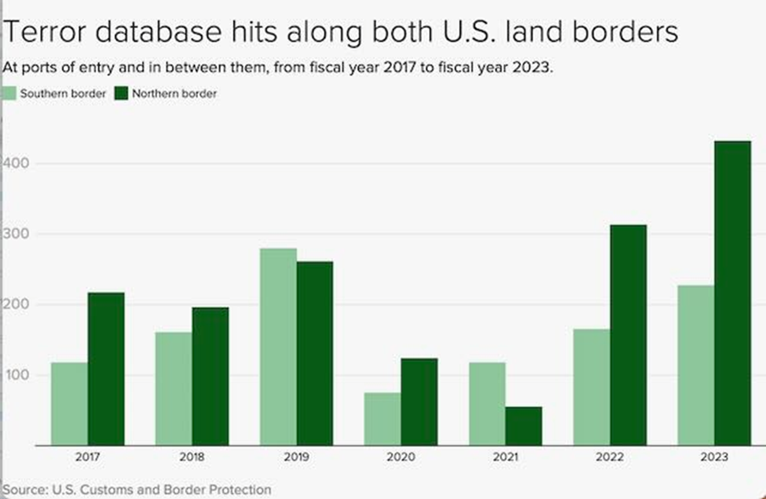
Customs and Border Protection recorded more than 430 watchlist hits along the northern border in fiscal year 2023, the vast majority of them at official ports of entry.
Still, there are concerns. In its homeland threat assessment for 2024, the intelligence branch of DHS said:
“…record encounters of migrants arriving from a growing number of countries have complicated border and immigration security…”
The assessment also said a recent increase in apprehensions of migrants from the Eastern Hemisphere, while still significantly lower than those from the Western Hemisphere, has “exacerbated border security challenges” because those individuals require more vetting and processing and because it’s more difficult to deport them.
There’s also the question of migrants who aren’t apprehended. The Border Patrol estimates more than 1 million individuals have entered the country surreptitiously over the past two years.
Republicans in Congress now talk about the southern border primarily as a national security issue rather than largely as a collective fear of the “great replacement”. If hundreds of thousands of migrants are evading apprehension, these national security fears have merit. But since terror watch list apprehensions are tiny and a lot higher along our northern border, that border most likely poses an equal threat to national security, if not more, since the security along the northern border is lax. We don’t really have any idea how many evade apprehension by crossing it.
Despite the constant hammering by Fox and the Right, since 1975 no one has been killed or injured in a terrorist attack in the US that involved someone who came across the border illegally. Whenever Congress gets around to dealing with illegal immigration, the solution will require more manpower both for the border patrol and immigration services.
Immigrants will keep on coming. Migration is a part of human nature. Europeans came to North America before America was a country. The peoples of the UK are not the peoples that were there 5,000 years ago. The vast majority of UK citizens have little DNA from the original peoples of those islands. That is also true in the US.
History shows that trying to stop immigration all together is a fool’s errand.
Regardless of how successful we are at controlling immigration, the US demographics of the past 250 years will look VERY different from the US demographics of 100 years from now. That doesn’t mean we should give up on controlling the process as much as possible. Part of that is to increase the costs of crossing the border, which we are doing today with instant expulsion and denial of asylum claims.
And once people are here, we must do all we can to get them integrated into US society.




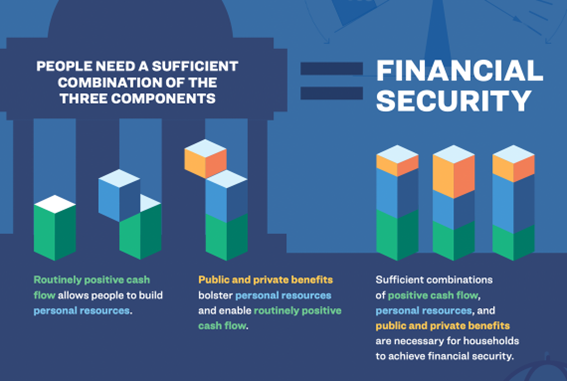
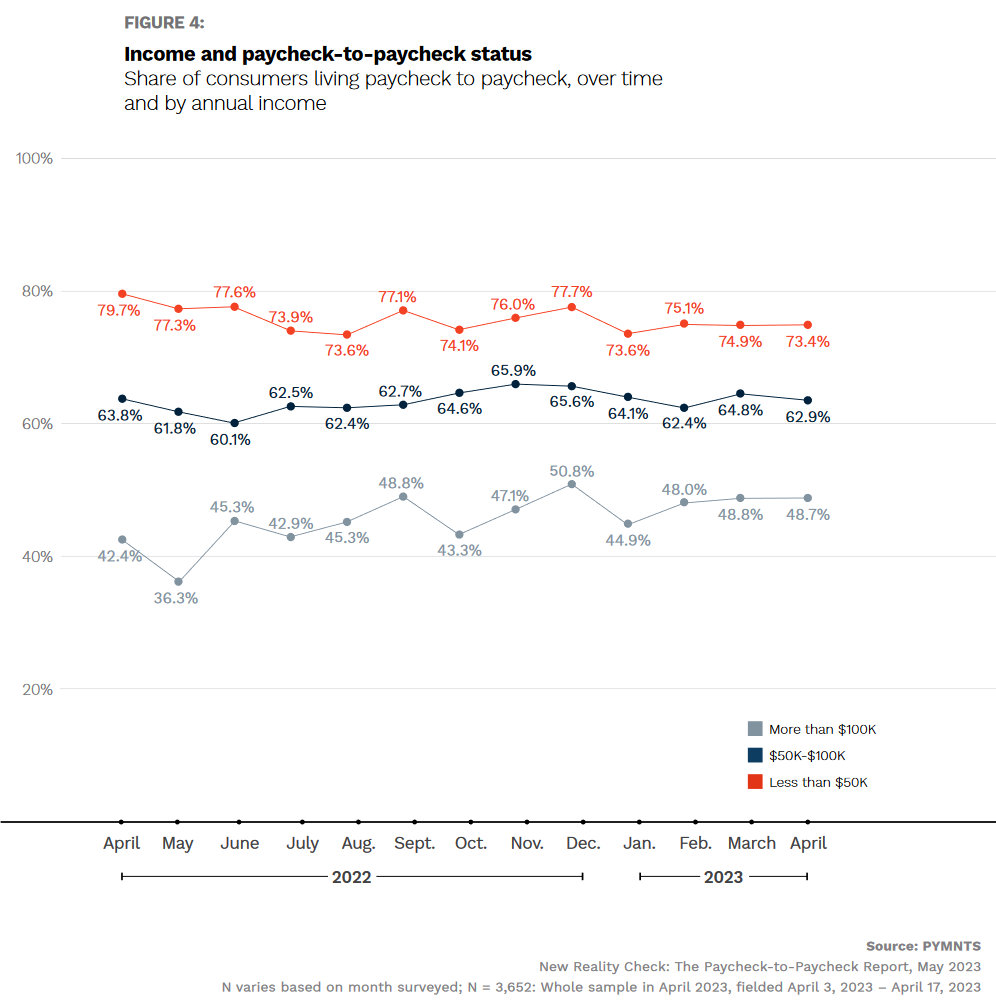



 Yellow Ocotillo in bloom, Anza-Borrego SP, CA – November 2023 photo by
Yellow Ocotillo in bloom, Anza-Borrego SP, CA – November 2023 photo by 